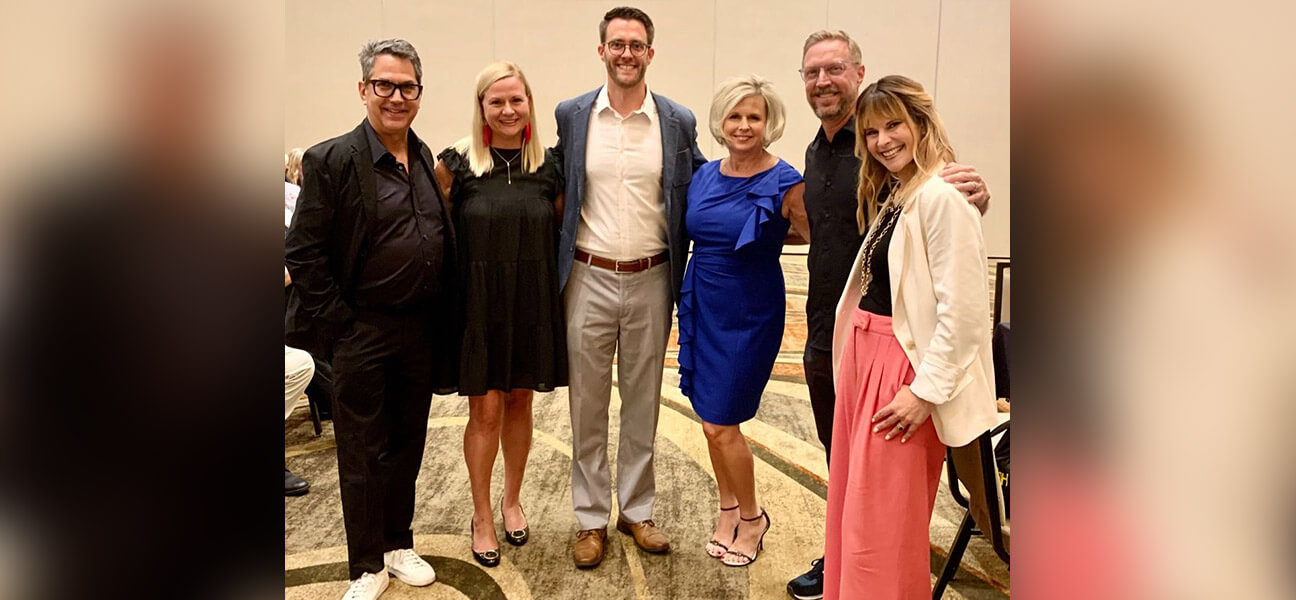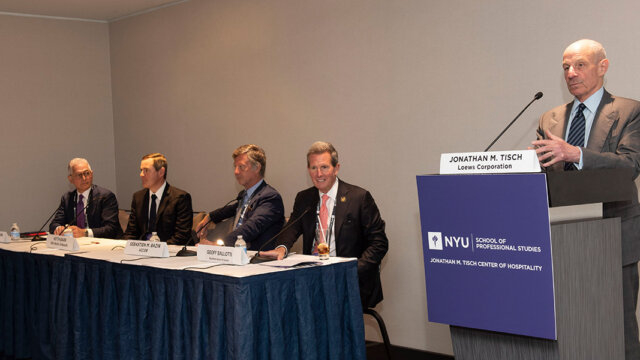During the “Hotel Design Trends for 2023” panel at this year’s Lodging Conference, design leaders gathered to discuss trends, innovations and creative concepts for the coming year.
Moderated by Christina Trauthwein, VP, Content & Creative, Hotel Business and InspireDesign, the panel included T.Jack Bagby, principal, Cooper Carry; Rafael Berkowitz, creative director New York studio, Campbell House; Scott Brown, NCARB, principal architect | operations, DesignCell Architecture; Christina Flannery, director, capital project management, Park Hotels & Resorts; and Stacy Garcia, CEO/founder, Stacy Garcia Inc.
Trends are always on the minds of designers. What’s hot, what’s not? How do designers distinguish between trends and fads? How do you stay on budget and ensure your design is modern yet timeless?
“A trend is something that is going to be consistent around the industry,” Bagby said. “It might be something that differentiates you or something a lot of people latch onto. I think we all agree that [design] has to do with the story. If you can sit there and take a story about your property that is unique, it is going to be something that differentiates you from other hotels, from your competitors. But, it’s also going to be that thing that gives it authenticity. Nobody else can take that story from you, and it’s something that will resonate with your guests [and] make them want to come back more and more.”
Garcia believes trends permeate everything designers do, but she warned to steer clear of the fads, as these can waste both time and money and fade out quickly, making trend forecasting critical.
“When you’re looking at trends, I always teach people to look for evolution and not revolution,” she said. “If it’s a revolution, it’s probably a fad, and you should be careful about it. If it came out on a TikTok video, it’s probably a fad and you might want to be careful about it. But, if you’re seeing it evolve over time, that’s one of the keys we look for. The second key is seeing if it’s in multiple categories, in multiple verticals: Is it in fashion? Art? Is it showing up at different touchpoints?”
Berkowitz raised a good point, asking where do trends start? “Time is the key to these equations…trends have to start somewhere,” he said.
Garcia said that her company looks at drivers—the economy, ecology, social impact and major events. These help point to where trends begin. She also advises designers to look for early information from fashion, the art scene and politics to predict trends.
“Also, following the trend but not being trendy is key,” Brown noted. “Us, as designers, we embrace change. It’s all about change. Twenty-five years of architecture, it’s never been the same for me. If you’re not open to change, you’re not going to move forward.”
Bagby agreed, while also pointing out that it’s critical to be out in front a little, but there’s also a danger of being too ahead of the trends. So how do designers find that sweet spot? He thinks it’s by getting knowledgeable designers involved.
“As long as you have your narrative and story and are true to your authenticity of what that narrative is, it will work,” Flannery added. “It’s not something that’s just part of a lobby or an afterthought if it’s true, distinctive and creates that ambiance and experience within a larger footprint of the story.”
Garcia thinks the best projects are those where, from the beginning, all the stakeholders are building that story together.
“This way, it’s being trained to the people working in the hotel, otherwise we sort of drop the mic as designers,” Garcia said. “We have to say that we’ve done our job, we’ve researched the project, but it’s the people with boots on the ground that are going to really be the ones to communicate the story to the guest. Design is the stage of play. It allows the guest to live out the experience. We’re all guests at properties as well, and when it’s done well, you remember the story well after the experience.”
Bagby took it a step further noting that there can be a high-end, luxury product that doesn’t have an ounce of story to it, while there can be a select-service product that tells an excellent story that guests will remember and want to go back.
“Good design rests in that narrative,” he said. “You can make smart choices. That’s actually the point, it helps us make those choices. You can accomplish it at any level it just takes some thought.”
“Yes, it’s the same ingredients, different recipe,” Brown added. “Localizing it as much as we can. Thankfully, the brands have been a lot more receptive to this the last few years. We want hotels to not look like the prototypical hotel. We want to be flexible—staying prototypical, but localizing and customizing it as much as we can. Follow brand standards with a little love.”
Berkowitz brought up the changing guest and how this is affecting their design expectations. Today’s guest is well-traveled and knowledgeable, which pushes designers to be better and different. “There has been a cross-pollination of experiences,” he said. “Hotels have to be like residences and residences have to be like hotels.”
Whether it’s a timeless trend or a fleeting fad, all of the leaders recognized the power of story. Having a unique, well-researched story creates the authenticity that today’s guests crave.
Look for more coverage on The Lodging Conference in the October issue of Hotel Business.



